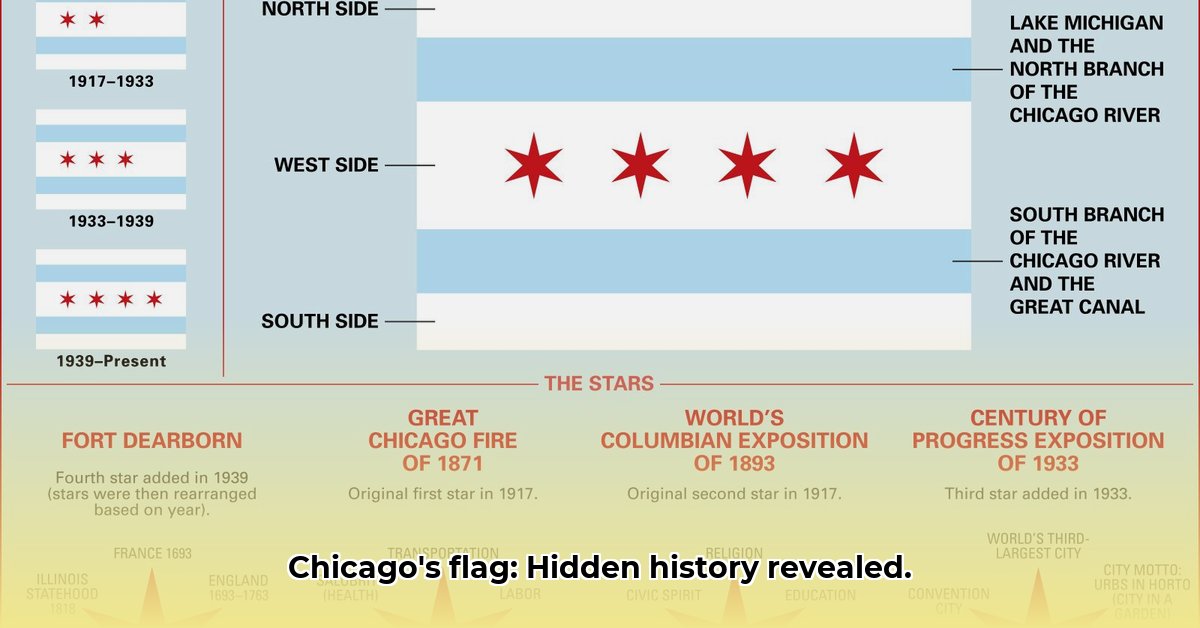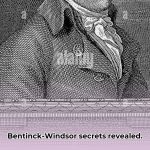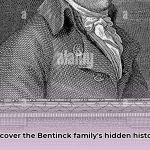Ever wondered about that cool flag you see waving all over Chicago? It’s more than just pretty colors; it’s a storybook of the city’s biggest moments, triumphs, and even disasters. Forget dry history lessons – we’ll explore the Chicago flag’s intricate design, discover what those four stars really mean (think devastating fires, world’s fairs that shaped the globe, and other pivotal events), and even dive into the passionate debate about adding a fifth star. For more on flags and their symbolism, check out this interesting article on Latin American flags. Get ready for an engaging journey through Chicago’s vibrant history, all told through the captivating story of its flag.
The Chicago Flag: A Visual Chronicle of the City
The Chicago flag isn’t merely a decorative banner; it’s a visual narrative, a carefully crafted timeline that encapsulates the spirit of the city. Conceived in 1917 amidst an era of dynamic growth, its design—the brainchild of Wallace Rice—is a masterful blend of aesthetics and historical symbolism. This emblem serves as a profound representation of Chicago’s rich heritage and ambitious aspirations.
Initially, two stars graced the flag, each a tribute to defining moments. The first star embodies the city’s unparalleled resilience, commemorating the Great Chicago Fire of 1871, a cataclysmic event that nearly decimated the city. It stands as a testament to Chicago’s remarkable ability to recover and rebuild. The second star radiates energy, celebrating the World’s Columbian Exposition of 1893. This event showcased Chicago’s emergence as a global hub, embodying its innovation and ambition. These stars weren’t just embellishments; they symbolized a city’s rebirth and its unwavering resolve. This exposition cemented Chicago’s prominence on the international stage, marking a significant milestone in its evolution.
The narrative of the Chicago flag continued to unfold alongside the city’s own evolution. In 1933, a third star was added, marking the Century of Progress International Exposition, a symbol of Chicago’s enduring spirit of innovation and its ability to host world-class events. In 1939, a fourth star was added, paying homage to Fort Dearborn, Chicago’s original settlement, acknowledging its historical roots. Each addition enriched the flag’s meaning, layering it with deeper historical significance. These additions spark ongoing discussions about which events warrant such recognition.
The flag’s brilliance extends beyond its stars to its elegant representation of Chicago’s geography. The two blue horizontal stripes symbolize the North and South branches of the Chicago River, vital arteries that flow through the city. The white stripes represent the North, West, and South sides of the city. It’s a design that effectively captures the essence of Chicago’s unique setting. Rice meticulously planned each element, ensuring that it accurately captured the city’s spirit.
However, the Chicago flag’s narrative remains dynamic. The debate surrounding the addition of a fifth star continues. Proponents suggest celebrating a significant post-World War II achievement or a pivotal social or cultural movement. Conversely, some worry that adding more stars may diminish the flag’s impact. What event, figure, or period merits such an honor? It’s a debate that will likely continue for years to come. Candidates for a fifth star include Chicago’s contributions to science, technology, or the arts. Such a decision demands careful and thorough deliberation.
Despite these discussions, the Chicago flag remains a lasting symbol, a potent representation of the city’s identity. It is more than just fabric; it’s a declaration of resilience, ambition, and a unique history. It embodies a community’s shared heritage and enduring spirit, a symbol that unites Chicagoans.
Unpacking the Chicago Flag’s Symbolism
| Symbol | Meaning |
|---|---|
| Blue Stripes | Lake Michigan and the North and South Branches of the Chicago River |
| White Stripes | North, West, and South sides of the city |
| Red Stars | Significant Events: Fort Dearborn, Great Chicago Fire, Columbian Expo, Century of Progress |
Decoding the Chicago Flag’s Four Stars: A Journey Through History
Key Takeaways:
- Adopted in 1917, the Chicago flag is a visual representation of the city’s heritage.
- Each of the four six-pointed red stars represents a pivotal moment in Chicago’s history.
- Understanding these symbols provides a deeper connection to Chicago’s rich past.
- The flag’s design – its colors, stripes, and stars – reflects the city’s geography and ambitions.
Fort Dearborn: The Seed of a City
Our journey to decode the Chicago flag begins with the first star, a tribute to Fort Dearborn. Established in 1803, this military outpost symbolized Chicago’s earliest days. It represented dreams of westward expansion and the promise of a new frontier. Think of it as the city’s humble origin on the shores of Lake Michigan. The fort’s destruction in 1812 during the War of 1812 underscores the challenges faced by this nascent settlement. Even in its destruction, the star signifies resilience. The fort’s legacy is interwoven with Chicago’s identity.
The Great Chicago Fire: A Phoenix Rising
Next, we encounter the second star, a reminder of the Great Chicago Fire of 1871. This devastating event destroyed much of the city. Yet, it became a catalyst for rebuilding and reinvention. Chicago rose from the ashes, showcasing its remarkable spirit. This star symbolizes not just destruction but also the indomitable spirit of its people. It’s a testament to the city’s ability to overcome adversity. This star is a reminder that tragedy can pave the way for greatness.
The World’s Columbian Exposition: Chicago on the World Stage
The third star represents the 1893 World’s Columbian Exposition. This event showcased Chicago’s architectural innovation and its growing global influence. The Exposition propelled Chicago into the international spotlight, solidifying its status as a major city. It was Chicago’s coming-of-age, a declaration of its arrival on the world’s stage. The “White City,” with its stunning architecture, remains a symbol of ambition and innovation.
The Century of Progress Exposition: A Vision of Tomorrow
Our final star signifies the Century of Progress International Exposition of 1933-1934. Held during the Great Depression, this exposition demonstrated Chicago’s optimism and its commitment to progress. The fair showcased technological advancements and a forward-looking spirit. It’s a representation of hope during challenging times. This star is more than just a historical marker; it embodies the city’s persistent drive toward a brighter future.
The Six Points of the Stars: Unveiling Layers of Symbolism
Each star on the Chicago flag has six points, a deliberate choice by designer Wallace Rice. The points symbolize the virtues of transportation, labor, commerce, finance, populousness, and health. This adds depth to the flag’s design.
Chicago Flag Design Elements: A Geographic and Symbolic Interpretation
Key Takeaways:
- The Chicago flag, adopted in 1917, is a symbol, blending geography and history.
- Its design – blue stripes, white field, red stars – embodies deep meaning.
- Each star represents a pivotal moment: Fort Dearborn, the Great Chicago Fire, the World’s Columbian Exposition, and the Century of Progress Exposition.
- The blue represents the Chicago River and Lake Michigan.
- The white field represents the city’s North, West, and South sides.
- The six-pointed stars distinguish it from other flags, adding to its identity.















